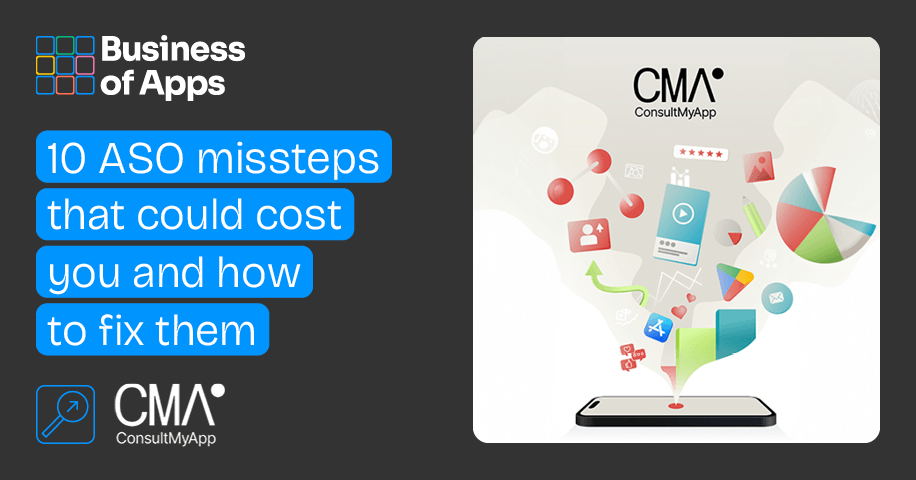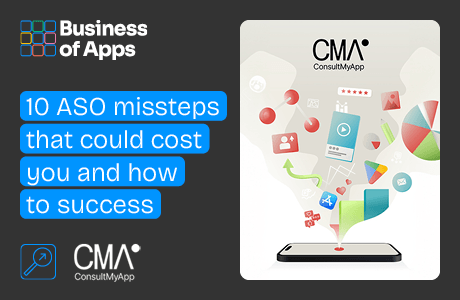
Increasing visibility, harvesting high-intent users via that magic word (downloads), and ultimately seeing your app grow without unsustainable acquisition costs—that’s every app developer’s dream, right?
To achieve this ideal scenario, there’s a vital component of your app marketing strategy you can never overlook: App Store Optimization (ASO).
With ASO, it’s not so much about dos and don’ts as it is about definite dos and “oh goodness, please don’ts”. If you want to craft a lasting and winning strategy, ASO is a science of many details. But not to worry—we’ve outlined 10 essential components you really don’t want to overlook in your organic strategy.
Confusing Google Play and Apple App Store strategies
It’s a common error to assume what works for Google Play will work for the Apple App Store, and vice versa. Each platform has its unique algorithm and best practices; for instance, Google indexes app descriptions for keywords, while Apple uses specific keyword fields. If you plan on offering your app on both Google and iOS, then tailoring your ASO approach to each platform is crucial for optimal results.
When optimizing apps for ASO on Android and iOS, developers face distinct challenges due to the different approaches each platform takes. Google Play emphasizes the integration of keywords within the app’s title, description, and back-end metadata, relying heavily on the description for search indexing.
On iOS, the focus is on the dedicated keyword field which prioritizes the title and subtitle for indexing, with the description playing a secondary role aimed more at conversion. Only about 2% of users actually read the description on iOS as the majority make the decision to download the app after looking at screenshots, so it’s important to showcase all the main features there.
Visual elements also differ, as Google Play allows up to eight screenshots and incorporates YouTube videos directly into listings, while iOS supports up to ten screenshots, showcasing the first three or a video in search results to attract users.
Understanding these nuances is essential for developers to effectively tailor their ASO strategies and enhance app visibility and engagement on each respective platform.
Ignoring metadata updates
Regular updates to an app’s metadata are essential in maintaining and enhancing its visibility and appeal on app stores. For iOS developers, it is essential to use the limited space available in metadata fields efficiently. Avoid duplicating terms in the short description (it’s better to avoid duplicates in all fields), as each character counts towards capturing potential users’ attention and improving search visibility. Instead, focus on unique descriptors that highlight the app’s features and benefits concisely and compellingly.
Metadata includes textual descriptions and visual elements such as icons and screenshots. These should be regularly refreshed to reflect the app’s latest features and user interface improvements. This approach keeps the app relevant and can improve download rates, as updated visuals can re-engage existing users and attract new ones.
For those managing iOS apps, leveraging platforms like APPlyzer can provide insights into effective metadata strategies.
These tools offer analytics and recommendations tailored to the iOS environment, helping developers understand how changes to their metadata can affect their app’s performance in the App Store. You can set up an APPlyzer account and track up to 100 keywords, completely free, so is a great place to get started when it comes to your keyword research efforts.
Understanding these nuances is crucial for implementing updates that align with current trends and user expectations, ensuring the app remains appealing and competitive in a crowded market.
Overlooking the impact of creatives
The impact of creatives—such as screenshots, videos, and the overall graphic presentation of your app—cannot be overstated when it comes to converting viewers into users. There are many things you can do to optimize your apps Conversion Rate (CR)
These elements not only attract attention but also play a pivotal role in the user’s decision-making process, serving as a key differentiator in crowded app stores.
When it comes to testing creatives, make sure you cover the basics:
A/B testing
Not groundbreaking, but still a vitally important aspect of crafting a winning ASO strategy. By regularly testing different versions of screenshots, videos, and other graphic elements, you can gather data on your user’s preferences and effectiveness in terms of engagement and conversion rate optimization.
Copy testing
While visuals catch the user’s eye, the textual content within your creatives is equally important in influencing decisions. Copy testing involves tweaking the wording in your app’s description, call-to-action buttons, and even the text within images to see which versions drive more downloads. This process helps refine messaging to ensure clarity and appeal, aligning your app’s communication with user expectations and increasing the likelihood of conversion.
You can use Store Listing Experiments (SLE) for Android and Product Page Optimization (PPO) for iOS to run A/B tests on each respective app store. They have a few minor differences, namely PPO being more focused on visual elements whilst SLE also allows you to test text elements. Ultimately both allow you to run A/B tests to refine your CRO strategy and are incredibly useful tools to be explored.
Localization is more than translation
Effective localization adapts your app to the cultural nuances and specific demands of each market, beyond just translating the text. This can significantly boost your app’s appeal and user engagement globally.
Localization goes beyond mere translation by adapting your app to the cultural nuances and specific preferences of each target market. This strategy is critical for engaging users on a deeper level, as it respects local customs, cultural references, and even regulatory requirements, thereby enhancing the user experience and boosting global appeal.
Effective localization involves several layers:
- Cultural adaptation: This includes modifying content to suit local tastes and cultural practices, such as changing colors, layouts, or images to align with local preferences.
- Legal and regulatory compliance: Ensuring the app meets local laws and regulations can be crucial, particularly in regions with strict controls over digital content.
- Local user behavior: Understanding and integrating local user behavior can significantly impact how the app is received. This might mean altering the app’s functionality or interface to better align with how target demographics use technology.
- Language localization: Beyond translating text, this involves localizing to dialects and idioms to ensure the language feels natural and engaging to native speakers.
By addressing these aspects, you can substantially increase your app’s relevance and attractiveness in foreign markets, leading to improved download rates and user retention.
Rating and reviews management
Managing ratings and reviews is critical to an app’s success, as they significantly influence its reputation and visibility. Effective strategies for managing this aspect are essential.
Effective rating prompts
Strategically timed and worded rating prompts can greatly increase the likelihood of receiving positive feedback from satisfied users. The best approach involves asking for ratings at high points in the user experience, such as after completing a task or achieving a milestone within the app. This timing makes users more likely to leave positive reviews due to the immediate sense of satisfaction they feel. Tools like Google Play’s In-App Review API and Apple’s SKStoreReviewController can help implement these prompts seamlessly.




